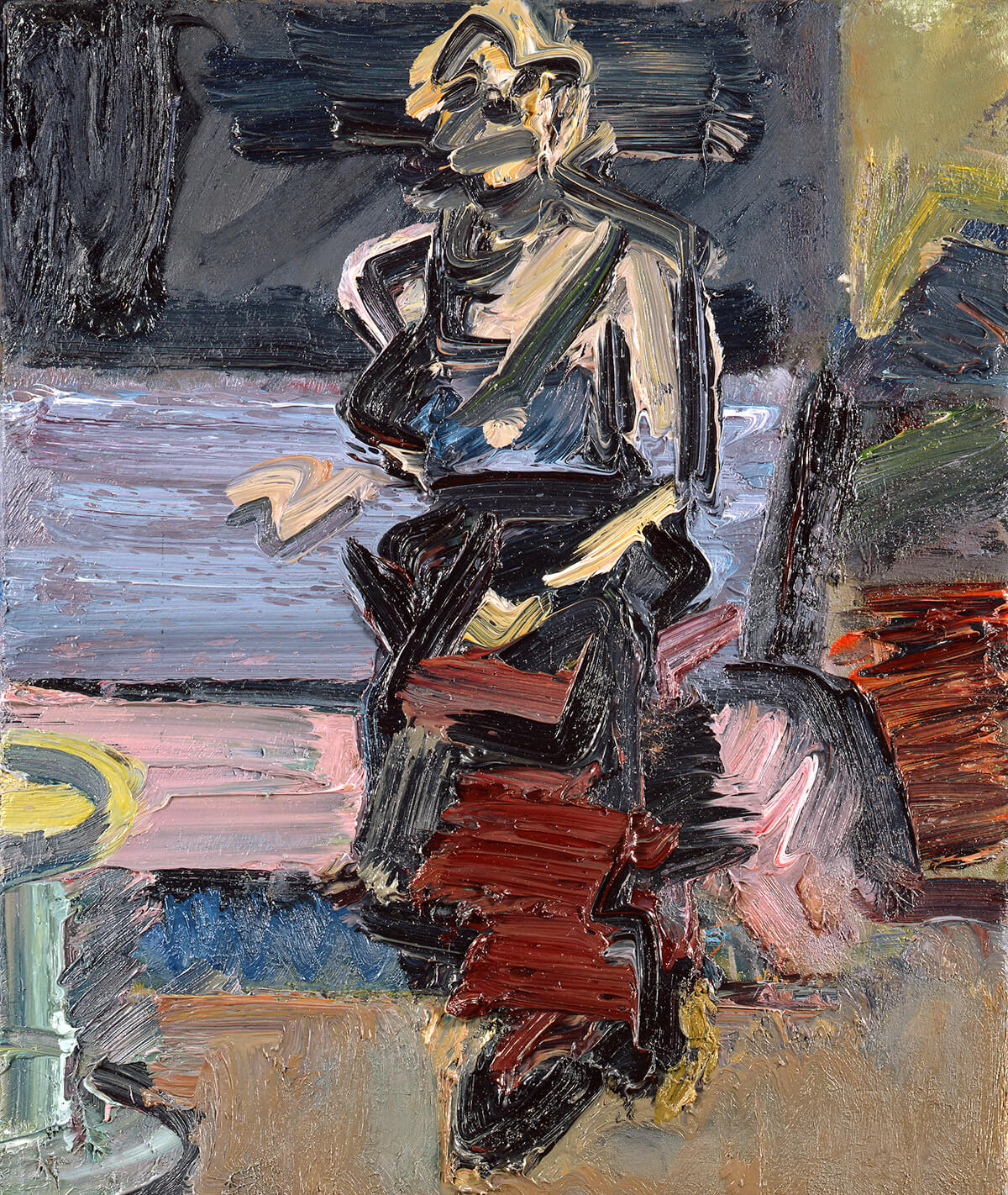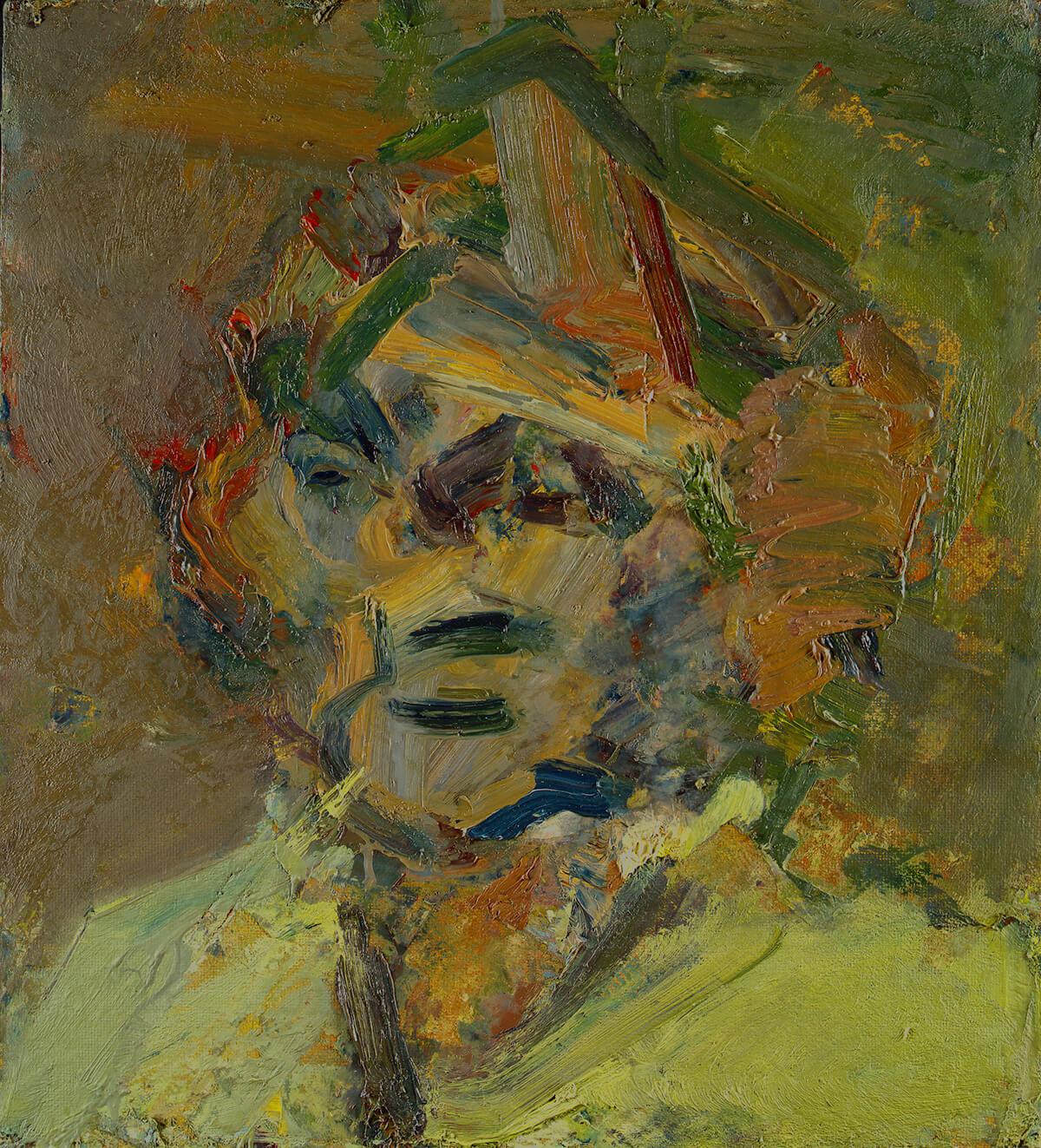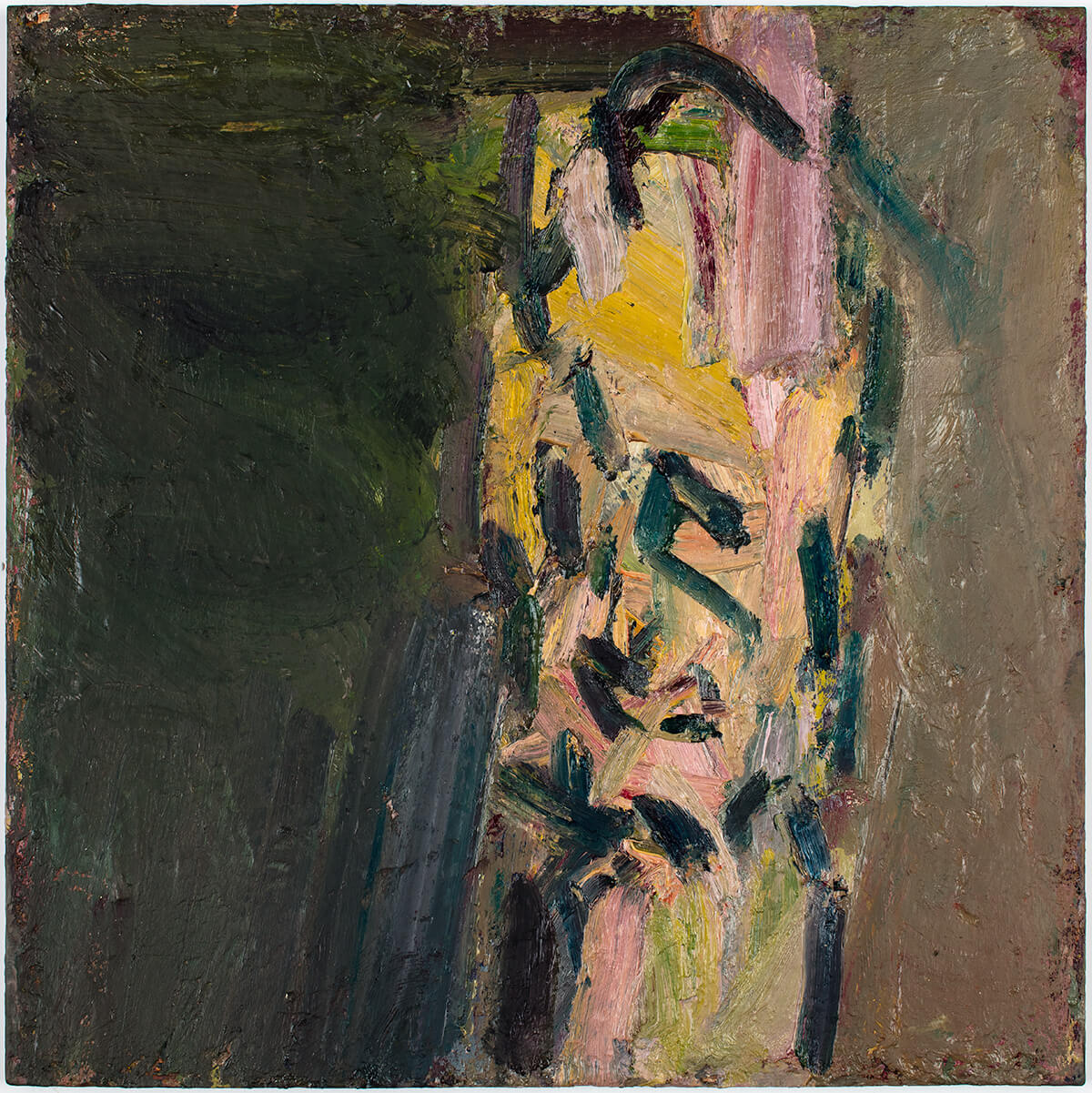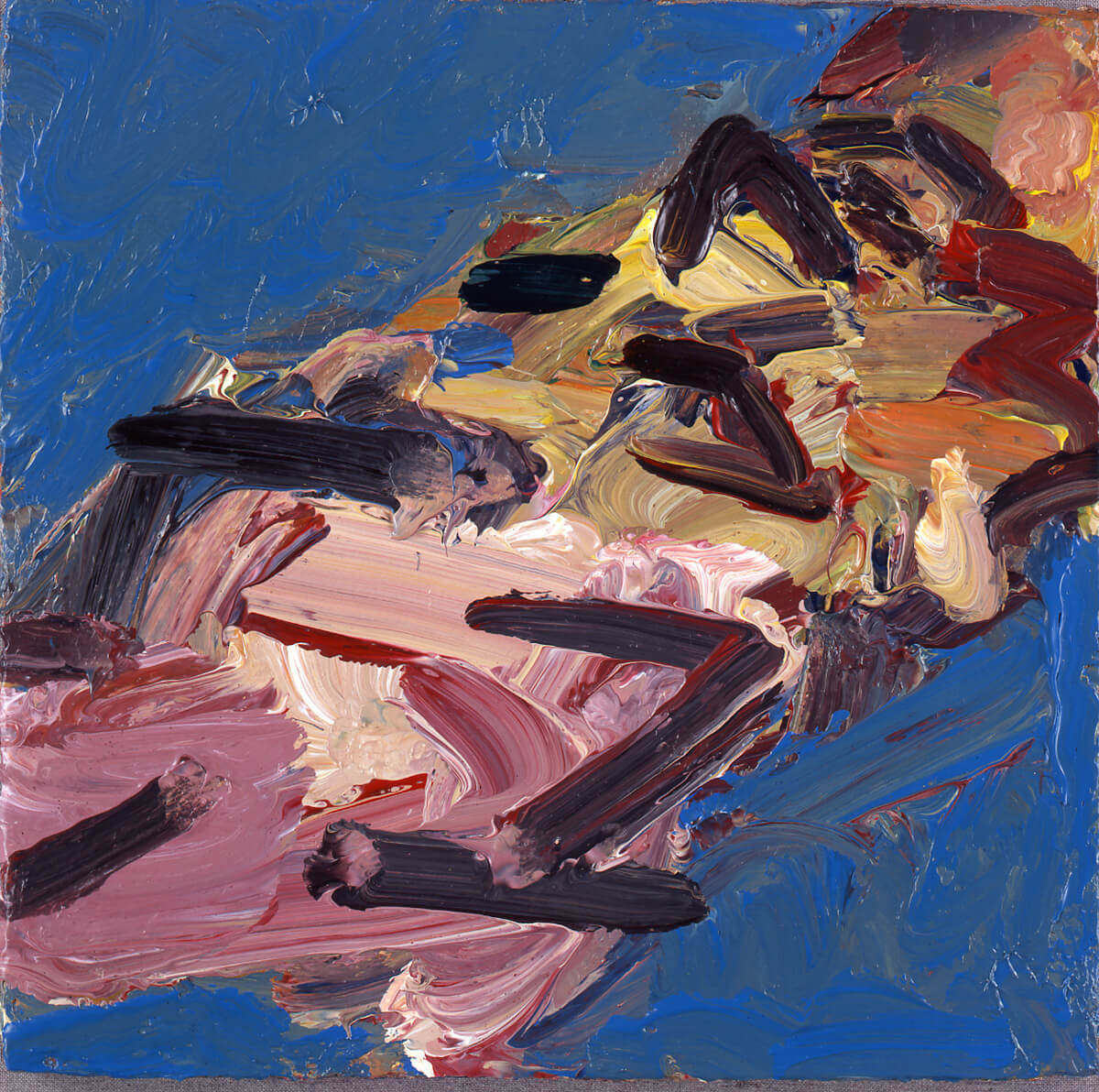The Neglect of Frank Auerbach
Jim Lewis
July 16, 2018

Well, of course you know who he is. Neglect? You know the name, anyway, or at least you’ve come across it. He’s one of those British painters, the one who isn’t Bacon or Freud or Hockney or Hodgkin or Kitaj. Kind of old-fashioned you might think, figurative, conservative. If you’re British, you probably even know the work: The Tate had a large retrospective of his paintings a few years ago, and the British newspapers write about him regularly. Not in America, where every museum who was offered the Tate show turned it down. (In fact, he has never had a museum show in this country. Kitaj has had at least six, Freud at least four.)
Moreover, very little has been written about him: a review or two in the New York Times over the past 25 years or so, nothing in the New Yorker, no profiles in the American press that I could find, no considered evaluations, just a name dropped here and there, and a few reproductions when he happens to do particularly well in an auction. I have had, over the years, hundreds and possibly thousands of conversations with painters, during the course of which hundreds and thousands of names have come up; but never his.
He is, I have long believed, one of the greatest of living painters, and possibly the best English painter of the 20th century. I have never seen one of his works on display in an American museum.
*
His life would make a very good novel, and in fact, W.G. Sebald wrote a splendid, slightly fictionalized version of it in the final chapter of The Emigrants. He was born in Berlin in 1931. I could probably stop there and let you imagine the rest, but these kinds of stories should always be told. In Auerbach’s case, the outline, at least, is simple: as the Nazis assumed power, his parents had him sent to England as part of an evacuation program for Jewish children known as the Kindertransport (Eva Hesse was spirited out of Hamburg via the same process). He was eight years old, and he never saw them again.

His work habits are monkish, monomaniacal, extreme. He has a modest studio in Camden, where he works 14 hours a day, 364 days out of the year, often sleeping on a cot in a corner of the room. On his day off, he goes to Brighton to walk on the beach. Aside from that he seldom travels, seldom breaks his routine. Sometimes he speaks of this devotion as a moral imperative—the only way to justify his existence, which sounds a bit like survivor’s guilt. Sometimes he says that there’s simply nothing he’d rather do than paint, which sounds very much like hedonism.
He works on an easel, using live models, generally friends or loved ones, some of whom have been coming to sit for him once or twice a week for decades. Each day he paints one of them complete, and as the day ends and he discovers he’s unhappy with what he’s made, he scrapes the paints from the surface before it dries, leaving it more or less clean for the next day’s attempt. It is, quite literally, a Sisyphean task, and it can keep going for a year or more, until the day he discovers exactly what lines he needs to make, and the whole thing is painted in one go.
This is all very charming, fun to recount and satisfying to hear, in a romantic sort of way: the dedication, the asceticism and lack of compromise. It’s also, of course, completely beside the point, since many artists work obsessively and make underwhelming things, and more than a few work only when they’re moved to, and make masterpieces. But I suspect it’s precisely this quaintness, this mythos, that works against him, at least in America, where we prefer our artists to be visitors from the future, to invent new and astral forms of life. Auerbach, by contrast, is trying to do exactly what van Gogh and Cezanne were trying to do: to make a picture of the world that forcefully and unexpectedly captures its lines and masses, and shows how they interact on some heretofore undiscovered level, and to thereby render our—or at least his—emotions before it: anxiety, adoration, fear, sympathy, and so on.

It’s strange that an artist should be working on such a project in 2018. Virtually all of the rhetorical moves common to contemporary art are simply missing here. Irony, critique, opacity, political suasion—not one appears. It’s stranger still that Auerbach should succeed, but he does, and thoroughly. In fact, he achieves something I would have thought nearly impossible in our day: an entirely new and enormously powerful way of representing human forms and expressions, unalloyed with second thought, mediation, strategy, or belatedness.
*
I’ve described Auerbach’s work as conservative, and so it is, though mostly in obvious ways: materials, size and scale, subject matter. But this is misleading: pictorially, they’re singular and perpetually new. For one thing, though he takes a long time to get there, once he knows what he wants to do the final picture emerges quickly—again, usually within a day, and, according to some of his sitters, in a kind of frenzy. So they are, at once, endlessly considered and violently spontaneous, both hyper-conscious and instinctive.
The result is a kind of mirage. Amid the slathered paint, the confident strokes, the thickening pigment, will you seldom find a line that in itself defines a form: there’s no way to look at the picture and say, That’s her hip. That’s his cheekbone. The figures arise with great force from an arrangement of seemingly disassociated marks, an especially curious, almost magical phenomenon because these are not busy paintings. Some seem to consist of little more than a dozen or so individual lines. Of course, any competent cartoonist can readily do the same, but Auerbach’s method is nothing like illustration: it’s more off-kilter, more masterful, more profound. What holds the image together is not just a trick on the eye, it’s a continuity of emotion and expression.
Walk slowly towards an Auerbach portrait, and by the time you’re arm’s length away, the composition will have begun to disintegrate into lovely but incoherent lines and colors. Of course, arm’s length is how far Auerbach himself would have been standing when he painted it, which suggests that his perception is dancing back and forth across the threshold between figuration and abstraction. This is a difficult place to be: it’s like balancing on a rolling log, and I’ve seen a number of artists try it, but none who succeed quite as fully.

You don’t know where you are, the proportions can suddenly go askew, bodies falling backwards from oversized heads, heads emerging from enormous, shovel-like brows, here a great, twisting ear taking over the foreground, or a squinting eye looking out from a head cocked back imperiously. In some cases, especially with the landscapes, the painter seems to be working from several perspectives at once, like a kind of smoothed-out, softened Cubism, more beholden to time than to space.
*
So much of art, at least as I experience it, is a battle against preciousness, in the rhetorical sense—preciousness of expression, fastidiousness, prettiness, pandering. And here we have paintings, portraits (from life, no less), medium-sized, colorful, “humanistic,” beautifully composed—all the apparent elements of that same calculated naiveté, but they’re not precious, not in that way, not at all.
I don’t know that I would want to live with one. There’s something disgusting about them, something obscene in the lathering on of oily pigments, the thick strokes like a finger through frosting, the encrustations and dollops and queasy swirls. They are rude things, ill-mannered in a way that can only be managed by those who aren’t trying. They have a vigor that can be disquieting. I mean all these remarks as high compliments.
So why is this work not better known? Or why is it known, but not more celebrated? In 1986, Auerbach shared the Golden Lion at the Venice Biennale with Sigmar Polke. It’s hard to imagine two artists less similar: one the magus of German post-modernism, the other a peculiar British anchorite, a throwback. Of course, it’s perfectly reasonable to admire them both. Why, then, is Polke still celebrated, but Auerbach somewhat obscure, an acquired taste? Why is his work not more readily seen in the U.S.—more often noticed, discussed, cited, debated? At the age of 87, he seems stranded, isolated, outside of history. It’s time to bring him back in.